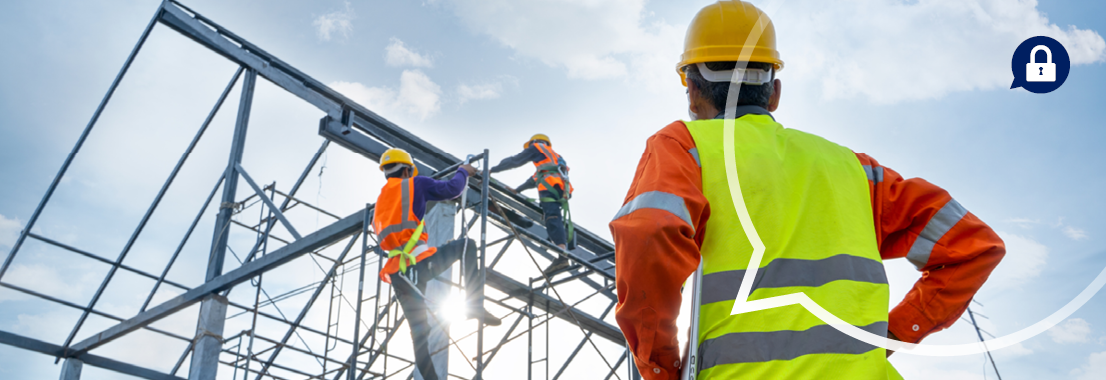
Fall prevention in the construction industry
Fall prevention in the construction industry
What are the most effective strategies you can apply to prevent falls in the construction industry? Croner-i offer some practical tips to ensure worker safety and reduce accidents on site.
Health and Safety Executive (HSE) guidance HSG150: Health and Safety in Construction, observes that falls are the largest cause of accidents and fatalities in the construction industry.
The primary focus of guidance in this area tends to look at the general causes of falls, which are described under two categories; “working at height” or “slips and trips”, and in turn, support is offered on both of these topics, with the stated aim of helping with the identification of hazards, controlling risks and explaining how to “plan, organise, control, monitor and review health and safety throughout the life of a project”.
HSE also provides subject specific guidance looking at activities that may result in an increased risk of falls. Examples include roof work, ladders (and step ladders), scaffolding, mobile platforms, and fragile surfaces.
It should perhaps be noted that the guidance offered by HSE does not distinguish between “low” and “high” falls. This is in line with the approach adopted by legislation; for example, the Work at Height Regulations 2005 describe work at height as:
“(a) work in any place, including a place at or below ground level,
(b) obtaining access to or egress from such place while at work, except by a staircase in a permanent workplace,
where, if measures required were not taken, a person could fall a distance liable to cause personal injury.”
Falls from height are not the only potential cause of injury. Falls onto things, such as; hot work; wet concrete; protruding reinforcement; onto equipment, such as machinery; moving plant or vehicles, can also have serious consequences, regardless of the distance involved.
In all circumstances, HSE favours a risk-based approach, applied in the following three stages:
Firstly, measures should be put in place to avoid working in a way which could result in a fall. If that is not possible, then the amount of that work should be minimised, and as a last resort, protective measures should be put in place to mitigate the possible consequences of a fall.
The third item can also be subdivided into two parts, general or “collective” protective measures, such as guard rails or improved lighting, and personal protective measures, such as harnesses or protective clothing.
Protective measures may be categorised as “fall arrest” or “fall restraint” systems. The former stops someone who is experiencing a fall, for example by using a net or a harness, while the latter is designed to stop them falling in the first place, perhaps by means of guard rails, warnings or edge protection.
However, although the individual may also be a contributing factor, these kinds of accidents come about for one of two reasons; either the workplace itself is not safe, or access to the workplace is inadequate.
There are a number of ways of dealing with both issues, so let us look at some of the options.
RoSPA Member? Login to MyRoSPA to continue reading or join today

Login to you MyRoSPA account
Login to MyRoSPA to read the full article and other exclusive content
Login
| Join RoSPA
Become a member now
Become a member to access MyRoSPA to view more exclusive content
Join
RoSPA Member? Login to your MyRoSPA to continue reading or join today

Login to you MyRoSPA account
Login to MyRoSPA to view some more exclusive content
Login
| Join RoSPA
Become a member now
Become a part of the MyRoSPA team to view more exclusive content
Register